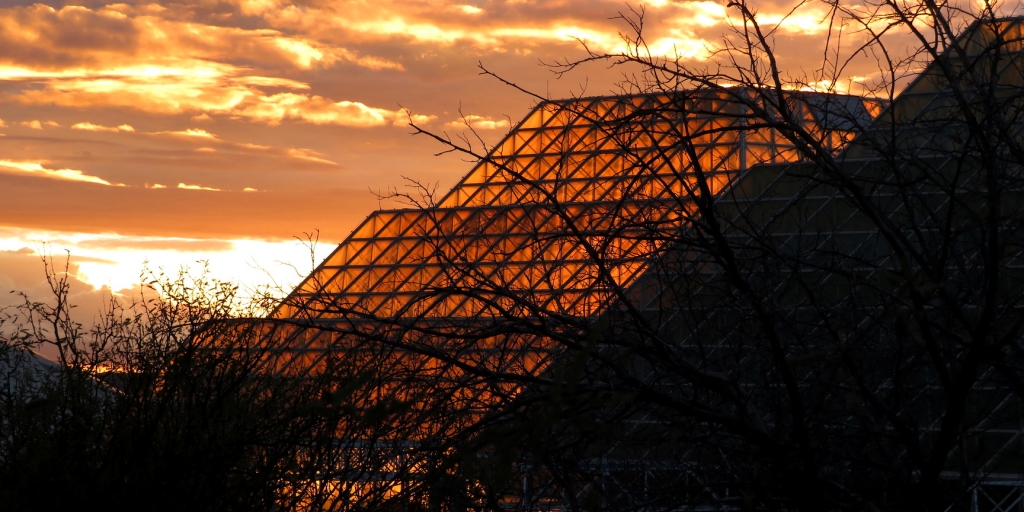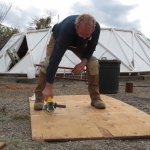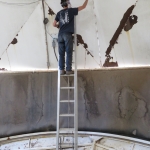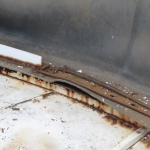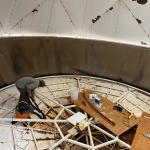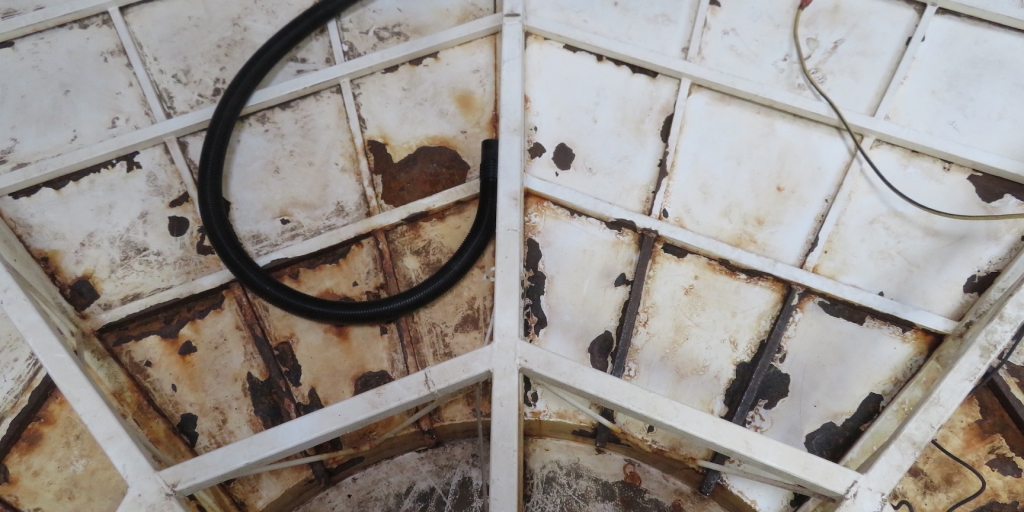
This second day of work on SAM at Biosphere 2 was not unlike the first, with a monumental task both our burden and our joy. There are so many items on our list that Trent and I stopped a few times, checking in to make certain the order in which we were tackling things is the most efficient when we consider three, four steps ahead. If we wash down the interior of the Test Module lung before removing the debris we would only find ourselves dealing with a dark, nasty slurry. Instead, we kept things dry, N95 masks engaged from morning ’till night, with goggles, hearing protection, and thick gloves employed.
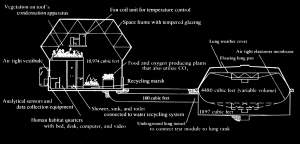 In 1987 the Test Module was built as a the second prototype (the first became the gift shop, just up the road), prior to construction of the Biosphere 2. This sealed greenhouse incorporates an underground tube to the lung, a passive means to maintain a positive internal pressure while at the same time compensating for barometric pressure and temperature changes that could otherwise cause the windows to crack or at best, break a seal.
In 1987 the Test Module was built as a the second prototype (the first became the gift shop, just up the road), prior to construction of the Biosphere 2. This sealed greenhouse incorporates an underground tube to the lung, a passive means to maintain a positive internal pressure while at the same time compensating for barometric pressure and temperature changes that could otherwise cause the windows to crack or at best, break a seal.
The lung is a diaphragm moved up and down by overall changes in the relative volume of air inside the Test Module. Over the course of hours, even days a cooler, shrinking air mass causes the lung to lower. With a warming, expanding air mass the lung rises in compensation. The total mass of the Test Module’s lung is measured in thousands of pounds. The Biosphere 2’s two lungs are 20 tons (40,000 lbs) each. When the Biosphere 2 was a sealed building, both masses were suspended mid-air as though completely weightless. While the function of this phenomenon is described by the well understood density of air and Boyle’s law of noble gases, it remains astounding to watch a large, very massive object lift lightly from the ground with little perceived movement of air, no sound, and no visible object doing the lifting.
After 33 years the EPDM membrane of the Test Module’s lung diaphragm remains flexible and in good shape with just a half dozen holes, clearly the work of rodent engineers and architects. Easily patched, it could have been much worse. We are pleased by this. Yet, the dual steel rings that hold the lower lip of the membrane in place to provide an essential seal are in poor condition having rusted thoroughly.
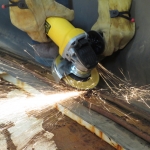 I held back the membrane while Trent applied a disk grinder to remove the final two bolt heads (the other twenty or so had rusted to dust) of one six foot, curved section. The top layer of angle iron popped free and we were able to inspect the lower steel ring. John joined us for an hour to assess the situation. I then fired off a few photos and description to Taber to gain his feedback and ideas.
I held back the membrane while Trent applied a disk grinder to remove the final two bolt heads (the other twenty or so had rusted to dust) of one six foot, curved section. The top layer of angle iron popped free and we were able to inspect the lower steel ring. John joined us for an hour to assess the situation. I then fired off a few photos and description to Taber to gain his feedback and ideas.
This is the essence of the first stage of our journey in building this hi-fidelity Mars analog. We are daily finding a balance of what we can do in the moment with that which requires research before action is applied. We are simultaneously calling upon those who built the original structures while applying the expertise of those here at Biosphere 2, now. We merge experience with new ideas as an expression of physics, chemistry, mathematics, innovation and creativity. Much of what we need is difficult to find in books or YouTube videos. Instead, we must find the person who knows how to get the job done, or be willing to dive in, make mistakes, and figure it out on the go. Step by step, challenge by challenge, we will bring the Test Module to life again as it is integrated into the Mars habitat analog called SAM.
It’s midnight again and the song of coyotes enters my open window at Biosphere 2. Time to sleep. Day three awaits. —Kai Staats, Director of SAM at Biosphere 2
